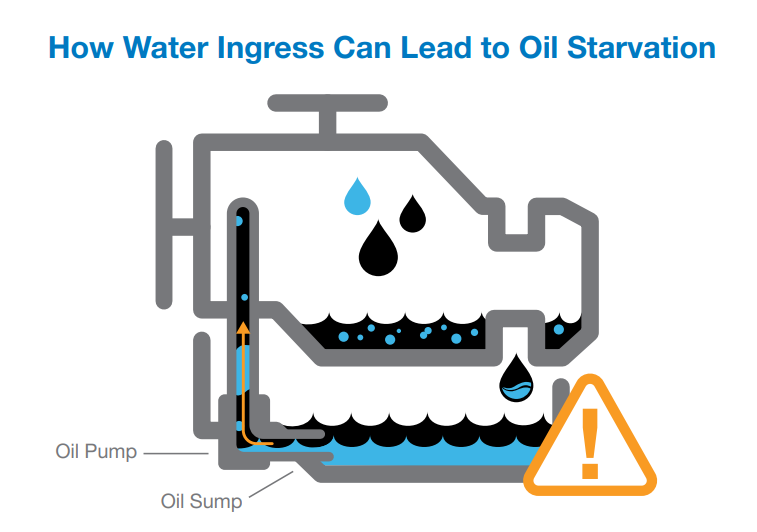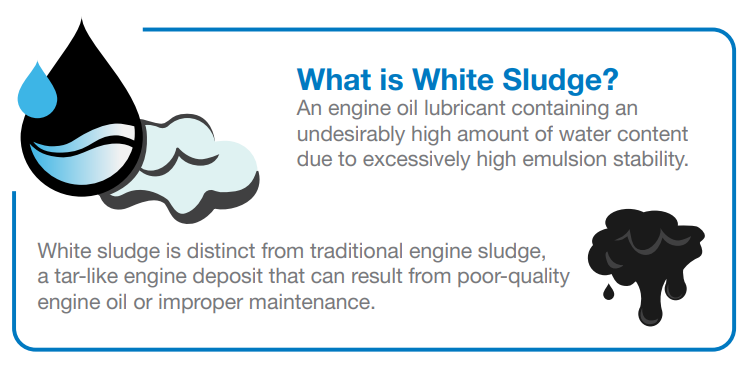Jul 24, 2023
Posted by David Growney PhD, Research Chemist, Mathew Robin, Technology Manager, Consumer Engine Lubricants
New sustainability initiatives. Evolving original equipment manufacturer (OEM) production plans. Growing consumer acceptance. These are just some of the signs of the hybrid and electric vehicle revolution around the world. Hybrid vehicles, in particular, are on pace to overtake internal combustion engine (ICE)-only production by the end of the decade. And that has major implications for the role of lubricants.

As OEMs further develop hybrid technology, and as lubricant manufacturers seek to support them in doing so, one performance characteristic has become newly important: emulsification performance, or the ability of the ICE lubricant to incorporate and stabilize water in hybrid vehicle architectures.
Why is water-in-lubricant emulsibility important? And how can formulators deliver optimal levels of emulsibility without potential unintended consequences? Read on to find out.
Why Emulsibility?
The presence of water within the ICE component of a hybrid vehicle is relatively unique from that of a conventional ICE vehicle. This is because the ICE in hybrid vehicle powertrains often maintains lower operating temperatures while the vehicle is being primarily powered by the battery. Hybrids also exhibit more stops/starts than traditional ICE vehicles, meaning the lubricant might not reach sustained higher temperatures for extended periods of time.
Because of these conditions, the ICE component may not as effectively enable the evaporation of water, sourced from condensation that may form during combustion. As such, the lubricant will inevitably experience water ingress during normal operation, and the water’s ability to properly emulsify with the lubricant while the lubricant maintains its protective benefits becomes critically important.
For these reasons, it is fair to assume that the highest levels of emulsion stability are desirable in hybrid engines—but at Lubrizol, we have found that this is not necessarily the case.

Lubricant Starvation and the “White Sludge” Phenomenon
For OEMs, one particular area of concern in hybrid vehicles involves excess water entering the oil sump. There is good reason for this concern: If excessive water becomes emulsified within the lubricant during operation and then re-enters the oil sump, it may demulsify, or separate, within the sump later. If the water separates, it will sink to the bottom of the oil sump where the oil pump draws from to lubricate the engine. If the oil pump draws a significant amount of pure water during the next engine start, the engine could experience significant oil starvation that may lead to damage and wear.
Very strong emulsion performance can lead to undesirable outcomes for OEMs and end users. A balanced approach is required for optimal levels of emulsion stability.
However, if a lubricant retains too much water in the emulsification, different problems can arise. A lubricant can and should maintain good emulsion retention, but it should allow water to evaporate when the lubricant temperature rises. This property comes from comes from a balance of emulsion stability (i.e., not too stable, but not too unstable). Without this balance, the lubricant may accumulate too much water in parts of the engine prone to excessive condensation formation.
In extreme engine testing trials, Lubrizol has evaluated lubricants that have emulsified to the point of becoming 40 weight percent water in specific, localized parts of the engine —in this instance the lubricant begins to take on the appearance of a white, sludgy material. We call this white sludge. In this state, the lubricant’s critical engine protection benefits can be compromised, potentially leading to high levels of acidification that can contribute to corrosion and premature wear.

These consequences demonstrate that very strong emulsion performance can lead to undesirable outcomes for both OEMs and end users. Instead, a balanced approach should be taken when determining the optimal levels of emulsion stability for a high-performance lubricant.
Testing for Emulsion Stability
Today, a common tactic for measuring emulsion stability is the ASTM D7563, a test that evaluates a lubricant’s emulsion stability at two different temperatures over a 24-hour period. The lubricant is emulsified with 10 weight percent water, 10 weight percent gasoline (with an ethanol content level of 85 percent), and then visually inspected for water that has separated out following the testing period.
To be sure, this test can be a reliable means of evaluating emulsion stability, but–for the reasons described above–it does not necessarily directly correlate with high performance in hybrid vehicles. The test does not account for the possibility of white sludge formation within areas of the engine that experience high levels of condensation. This once again demonstrates the need for a balanced, tailored approach for proper formulation of high-performing lubricants in hybrid vehicle applications.
Our View
Increasing vehicle hybridization around the world means that lubricant formulations must account for challenges that may arise within new powertrain architectures. The need for optimal levels of emulsion stability within hybrid-specific formulations is critically important.
As a second part of this series, we’ll dive deeper into acidification in white sludge, how it happens, and why it can be highly problematic for hybrid vehicles. At Lubrizol, we’re committed to uncovering new problems, such as white sludge and the importance of water evaporation, through our extensive testing. It’s our mission to work collaboratively with lubricant manufacturers to identify the specific needs of evolving engines and to deliver the additive solutions necessary to provide reliable performance in every application.
Read more about Lubrizol testing and the lubricant needs of hybrid engines:
Measuring Lubricant Lifetime Are Current Measures Telling the Whole Story
Lubricants for e-Mobility What You Need to Know









